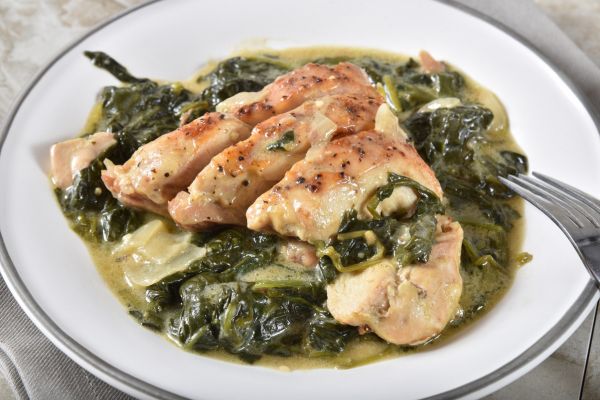Let’s be real — baking is already part science, part magic. But when you take gluten out of the equation, things can get… tricky. Gluten is what gives baked goods that stretchy, chewy texture we all love. So, when it’s gone, you’ve got to get a little creative. The good news? With the right Gluten-Free Baking Tips, you can whip up muffins, cookies, and breads that taste just as amazing as their gluten-packed cousins — maybe even better.
Understanding Gluten-Free Baking
Before diving into the Gluten-Free Baking Tips, it helps to understand what gluten actually does. In regular baking, gluten forms the structure that traps air and helps dough rise. Without it, your bakes can turn out dense, crumbly, or flat. The secret is finding the right substitutes and methods to recreate that structure and balance of moisture.
That’s where your choice of flour, binding agents, and techniques come into play. Once you understand how these work together, gluten-free baking becomes less about restriction and more about experimentation.
Choosing the Right Gluten-Free Flour
Here’s the thing: not all gluten-free flours are created equal. Almond flour, rice flour, coconut flour, oat flour — each brings its own flavor and texture. For best results, don’t rely on a single flour. Blending them gives a much more balanced outcome.
For instance, a mix of rice flour (for structure), tapioca flour (for stretch), and almond flour (for richness) can mimic that gluten feel. If you’re just starting, grab a good all-purpose gluten-free flour blend. Most are formulated to replace wheat flour one-to-one and already contain a mix of starches and gums.
The Secret Power of Binders
In gluten-free baking, binders are your best friends. Since gluten’s gone, something else has to hold everything together. Enter xanthan gum, guar gum, psyllium husk, and chia seeds.
- Xanthan gum is a classic choice — just a teaspoon or two per cup of flour helps recreate elasticity.
- Psyllium husk gives a more natural chew and great structure for bread.
- Chia or flax seeds, when soaked, act as natural thickeners and binders while adding fiber.
But don’t overdo it. Too much binder can make your baked goods gummy instead of soft and fluffy.
Moisture Is Everything
Here’s a golden rule among Gluten-Free Baking Tips: moisture is king. Gluten-free flours tend to absorb more liquid, which can make baked goods dry. So, bump up the moisture content a bit — think extra eggs, a splash of milk, yogurt, or even applesauce.
Adding moisture not only helps texture but also improves flavor and shelf life. The goal is a batter that feels a little looser than traditional dough. Trust me, once baked, it’ll come out perfect.
Don’t Skip the Resting Time
This one’s easy to overlook, but it’s a game-changer. Gluten-free batters need resting time to hydrate fully. Let your batter or dough sit for 20–30 minutes before baking. This allows the flours and binders to absorb liquid evenly, resulting in a smoother texture and fewer gritty bites.
For breads, a longer rest (even overnight in the fridge) can make a huge difference in flavor and rise.
Temperature and Timing Adjustments
You know how sometimes gluten-free cookies brown too quickly or cakes sink in the middle? That’s because gluten-free flours often behave differently under heat.
Try lowering your baking temperature by 25°F and adding a few extra minutes of baking time. It helps prevent over-browning and ensures the center bakes through evenly. Every oven and recipe is different, so keep an eye on color and texture rather than just the clock.
Don’t Fear the Crumbly Texture (At First)
The thing is, your first few tries might not look bakery-perfect — and that’s okay. Gluten-free baking takes a little patience. If your cake falls apart or your bread feels a bit dense, you’re learning how each ingredient works. Sometimes, it’s as simple as adding one more egg or a tablespoon of starch to fix the texture next time.
Every mistake teaches you something. And soon, you’ll start to feel when the batter is right — that’s when you know you’ve got it down.
Taste and Flavor Matter Too
A big part of Gluten-Free Baking Tips is remembering flavor. Gluten-free flours often have distinct tastes — some nutty, some earthy, some slightly bitter. To balance them, use natural flavor boosters like vanilla extract, cocoa powder, lemon zest, or cinnamon.
Roasting nut-based flours slightly before using them can also enhance their aroma and reduce any raw flavor. And don’t forget a pinch of salt — it ties everything together beautifully.
Storing Gluten-Free Baked Goods
One thing about gluten-free treats: they can dry out faster than regular ones. So, proper storage matters. Once cooled, wrap them tightly or store them in an airtight container. For longer storage, freeze in portions — most gluten-free cakes, muffins, and cookies thaw beautifully at room temperature.
If you’re baking bread, try slicing it before freezing so you can toast a piece or two whenever you want.
Keep Experimenting and Have Fun
Honestly, gluten-free baking isn’t just about replacing ingredients — it’s about rediscovering baking itself. You’ll find combinations that work surprisingly well, and the satisfaction of nailing a perfect loaf without gluten is unbeatable.
Don’t be afraid to experiment with unconventional ingredients like sweet potato, quinoa, or buckwheat. Each adds its own twist to the flavor and texture profile.
Final Thoughts
So, there you have it — a complete guide filled with Gluten-Free Baking Tips to help you bake confidently without gluten. Remember, it’s all about balance: the right flour mix, enough moisture, good binders, and a bit of patience.
Your first few bakes might be a little unpredictable, but keep going. With each batch, you’ll get closer to that perfect texture and taste. The thing is, once you master gluten-free baking, you’ll never look back — because the results? Totally worth it.
